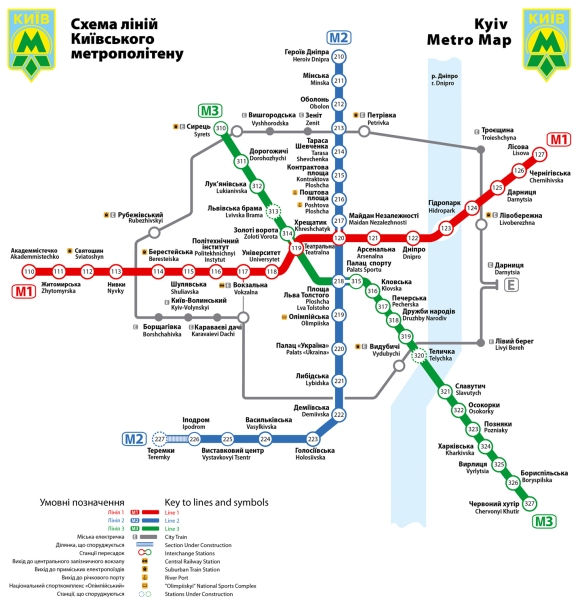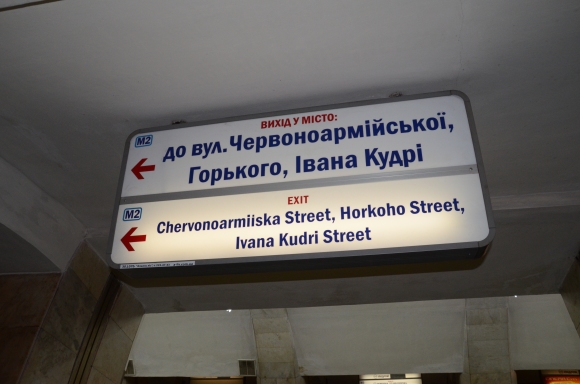
When in Kyiv, you’ll discover that the easiest and most convenient method of transportation is the underground metro. There are 3 lines: M1 (red), M2 (blue) and M3 (green). Interchanges between these lines are possible at 3 stations in the centre of Kyiv.
Each ride on the metro costs 2 Ukrainian hryvnias (USD 2), and is one of the cheapest form of urban rail in the world. Passengers can purchase blue plastic tokens from the cashier (who usually don’t speak English ), or from automated machines in the station.
One tip is to purchase tokens in bulk, like five or ten at a time. This saves time and doesn’t leave you with or require small change. If you’re carrying luggage, you’ll need to go through the gate manned by a metro staff instead of the turnstile, and you’ll have to pay double.

After the Euro 2012 held in Ukraine, every station has bilingual signboards.and maps in English and Ukrainian, so finding your train platform is not as difficult.

Trains depart very frequently. During evening peak hours on weekdays, you’ll probably only need to wait for less than a minute for a train, while during weekend mornings, the frequency is about 5 minutes.

Metro stations are mostly deep underground, and to reach the platform, you have to ride down a long escalator from ground level. Here’s a video of me as I ride up Arsenalna station, which is 105.5 metres below the ground and is the deepest metro station in the world.
And now for some history, after all the practical tips.
The Kyiv Metro first started operations on 6 November 1960, and it was the third metro system built in the Soviet Union after Moscow and St Petersburg (Kyiv was also the third largest city in the Soviet Union after these 2 cities). There are currently 50 stations in three metro lines. The four newest stations were opened in December 2010. I’ve never been to these stations, but according to a local whom I have spoken to, the new station designs feature more modern decorations instead of palacial ornaments.
